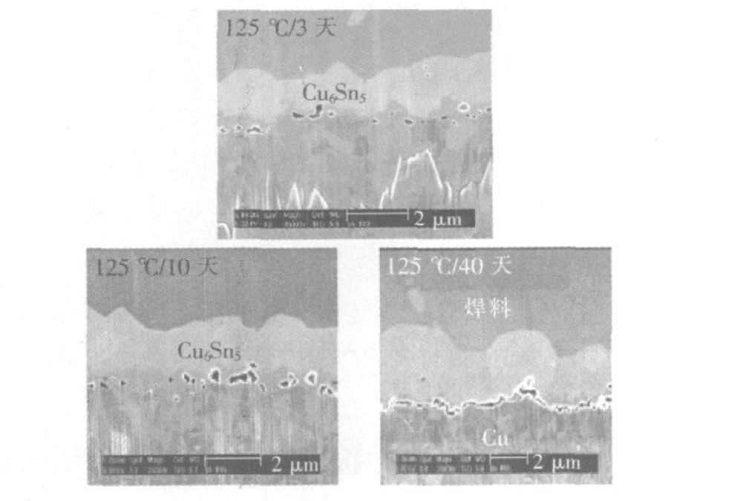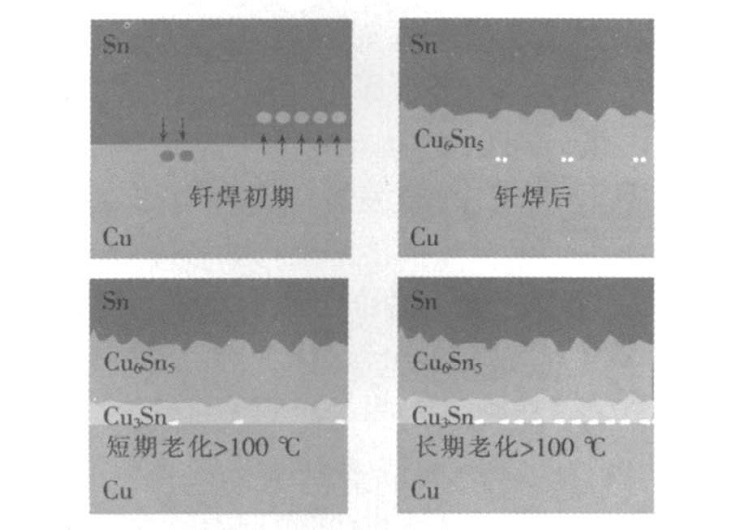Formation and Harms of Kirkendall Voids in Solder Joints
The previous article discussed the types of void defects in solder joints. This article will focus on Kirkendall void formation after solder paste reflow.
High incidence scene at Kirkendall voids
According to statistics, device failures caused by heat account for more than 50% of electronic device failures. Excessive operating temperatures can damage semiconductor devices and reduce the reliability and performance of electronic devices. As the number of transistors on the chip increases, the heat generation climbs rapidly, making the heat generation problem more prominent. If the electronic equipment works in an environment with a high temperature for a long time, the interaction between the solder joints and the metal contacts on the wafer or substrate will occur, resulting in the formation and growth of intermetallic compounds (IMCs) at the interface. Due to the effect of heat, the reaction and diffusion of alloy elements in the solder joints are uneven, resulting in the formation, polymerization, growth, and generation of micropores at the interface, thereby reducing the mechanical integrity of the solder joints, weakening the interface, and causing solder joint failure.
Kirkendall void location
Interface or Intermetallic IMC

Kirkendall void growth.
Harms of the Kirkendall voids
Due to the difference in thermal expansion coefficient between various IMCs or IMCs and solders, the internal stress of the solder joints is large. The stress is easily concentrated in the Kirkendall voids, making the void easy to crack, and the solder joints are prone to brittle fracture. The reliability of micro-solder joints has been challenging.
Causes of Kirkendall voids- Kirkendall Effect
Diffusion is the movement of atoms (or molecules) in the matter and is a way of matter transfer. When two dissimilar metals come into contact and diffusion, dispersed and concentrated vacancies can be formed on one side of the rapidly diffusing metal, while a matrix expands on the slow side. This effect was first confirmed by Kirkendall et al. It can be seen from the Kirkendall effect that when two substances diffuse into each other, voids are formed on the metal side where the diffusion is faster due to their different diffusion rates. This phenomenon also often occurs in diffusion soldering of dissimilar materials, and diffusion voids can be observed under the microscope.

Schematic diagram of the diffusion of Sn-Cu solder joints.
Effects of Kirkendall voids on reliability
The solder joints of high-end servers and communication equipment generally work in an environment of around 75°C for 6 to 7 years. Due to the formation of Kirkendall voids, the solder joints can be completely disconnected. Due to the high packaging density, high power load, and insufficient heat dissipation of the structure in the popular 3D packaging structure in recent years, the calorific value of 3D packaging components per unit volume has become larger. The operating temperature has exceeded 75 °C, which is more likely to produce Kirkendall voids and shorten the life of the solder joints. Chiu et al. found that the longer the aging time of solder joints, the higher the aging time and temperature, the higher the Kirkendall void density in solder joints, and the lower the impact resistance of solder paste solder joints. When aged at 125 °C for 10 days, the life of the test panel was 80% lower than that of the unaged one. After 40 days of aging at 125 °C, failure occurred at the first drop impact. The paper proposes that the decrease in solder joint strength and solder joint drop reliability are mainly related to the formation and aggregation of Kirkendall voids.
Factors affecting the formation of Kirkendall voids
Soldering materials, solder doping, UBM pretreatment, and other factors have a great influence on the formation of Kirkendall voids.
Some studies have shown that solder paste or other solder doping elements can sometimes inhibit the formation of Kirkendall voids.
The chemical reaction between solder paste or other solder and pad metal is affected by alloying elements. (1) The reaction/growth rate increases or decreases. (2) Additives can change the physical properties of the reaction-formed phase. (3) Additional phases can be formed on the interface, and other reaction products can also be formed in place of binary phases. For example, there have been many studies on the doping of Zn and Ni elements in the solder industry.
As mentioned earlier, the formation of Kirkendall voids is related to a variety of factors and is the result of the combined influence of various factors. However, as solder paste plays an important role in package soldering, it should be considered during product design to mitigate void formation. Shenzhen Fitech specializes in the development and production of high-quality solder paste, epoxy solder paste, and solder powder. It has certain experience in the improvement of the solder paste product reliability. Welcome to contact us for more information and cooperation.
-End-
*Disclaimer: Except for "reprinted" articles, the copyright of the original content published on this site belongs to Shenzhen Fitech. Without consent and authorization, it may not be reproduced, reproduced, quoted, changed, or published. This article is originally created by the author, and the content of the article is the author's personal opinion. "Reprint" is only to convey a different point of view and does not mean approval or support for the point of view. If there is any infringement, please contact us, and we will delete it!

















 Back to list
Back to list



